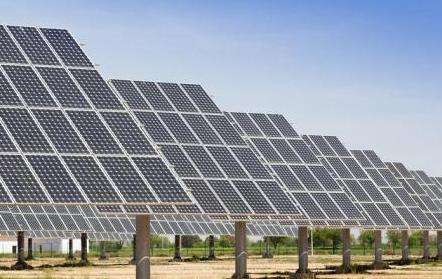1. The amount of ocean energy contained in the total ocean water mass is enormous, but the energy per unit volume, unit area and unit length is small. This means that if you want to get large amounts of energy, you need to get it from a large amount of seawater.
2. Ocean energy is renewable. Ocean energy comes from solar radiation and gravitation between celestial bodies. As long as the sun, moon and other celestial bodies coexist with the earth, this energy will be regenerated and will be inexhaustible.
3. Ocean energy can be divided into more stable and unstable energy sources. The most stable are the energy of temperature difference, the energy of salinity difference and the energy of ocean currents. Unstable energy is divided into two types: regular changes and irregular changes. Tidal energy and the energy of currentsThe tides are unstable but change regularly. According to the changing laws of tidal currents, people make daily and hourly forecasts of tides and tides for various locations to predict the size and strength of tides at different times in the future. Tidal power plants and tidal power plants can organize power generation operations based on forecast tables. What is both unstable and irregular is the energy of the waves.
4. Ocean energy is a clean energy source, which means that once developed it will have little impact on environmental pollution. It is the most commonly used form of wind energy by contemporary people. Since the development of wind turbines in Denmark in the late 19th century, people realized that energy such as oil would be exhausted, so they paid attention to development. wind energy and useknows the wind to do other things.
In 1977, the Federal Republic of Germany built the world's largest electricity-producing windmill in Blombottel, a famous wind valley in Schleswig-Holstein. The windmill is 150 meters high, each blade is 40 meters long, weighs 18 tonnes and is made of fiberglass.
By the end of 2009, the global cumulative installed capacity reached 159 million kilowatts, and the newly installed capacity in 2009 exceeded 30 million kilowatts, an increase of 31.9%. In terms of cumulative installed capacity, the United States has a cumulative installed capacity of 35.16 million kilowatts, ranking first; China has a cumulative installed capacity of 26.1 million kilowatts, ranking second in the world.
A massage technique that feels like waves hitting the body.
Undersea energy is also called ocean energy. The energyOceanic energy refers to renewable energy linked to seawater. The ocean receives, stores and emits energy through various physical processes. This energy comes in the form of tidal energy. and wave energy, temperature difference energy, salinity difference energy, ocean current energy and other forms exist in the ocean.
Ocean energy utilization refers to the use of certain methods and equipment to convert various ocean energies into electrical energy or other usable forms of energy. Since ocean energy has the advantage of being renewable and not polluting the environment, it constitutes a new source of energy of strategic importance that urgently needs to be developed.
1. The amount of ocean energy contained in the total mass of ocean water is enormous, but the energy per unit volume, unit area, and unit lengthis weak. This means that if you want to get large amounts of energy, you need to get it from a large amount of seawater.
2. Ocean energy is renewable. Ocean energy comes from solar radiation and the gravitational force between celestial bodies. As long as the sun, moon and other celestial bodies coexist with the earth, this energy will be regenerated and will be inexhaustible.Inexhaustible.
3. Ocean energy can be divided into more stable and unstable energy sources. The most stable are the energy of temperature difference, the energy of salinity difference and the energy of ocean currents. Unstable energy is divided into two types: regular changes and irregular changes. Tidal energy and tidal current energy are unstable but change regularly.
Depending on the changing laws of tidal currents, people compile daily forecaststides and tide and current schedules for various locations to predict the size and strength of tides at different times in the future. Tidal power plants and tidal power plants can organize power generation operations based on forecast tables. What is both unstable and irregular is the energy of the waves.
4. Ocean energy is clean energy, which means that once developed it will have little impact on environmental pollution.














